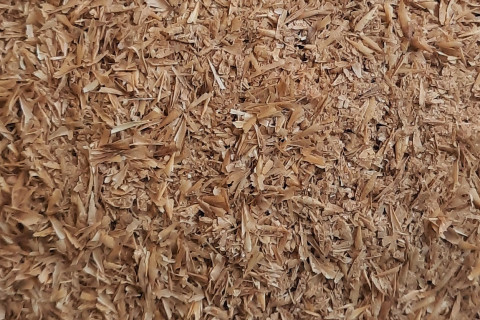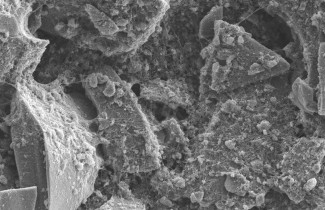The doctoral dissertation in the field of Applied Physics will be examined at the the Faculty of Science, Forestry and Technology, Kuopio Campus.
What is the topic of your doctoral research? Why is it important to study the topic?
Extensive utilisation of natural resources and human-based activities leads to pollution of the environment. Pollution endangers both people and the environment, and therefore new approaches, e.g., production of materials, must be developed to reduce pollution. In addition to the remediation of the environment, approaches should be robust and profitable for society. One option is to use resources and waste more efficiently. For instance, circular economy is an economy emphasising sustainable development and growth with minimal production of waste and pollution of the environment. An essential part of the economy is valorisation of industrial and agricultural sidestreams, which means using all parts of the material and converting them into fuel, energy, and/or useful and valuable materials.
In my research, I have used barley husks as raw material. Barley husks contain a relatively large amount of nanostructured silicon dioxide (silica) which can be used to prepare nanostructured silicon carbide. Moreover, a grain size smaller than 100 nm brings nanostructured silicon carbide superior physicochemical properties. However, its affordable and large-scale production is still challenging. To address the above-mentioned issues, my doctoral research focused on the development of nanostructured silicon carbide from barley husks.
The effect of valorisation, i.e., combustion and slow pyrolysis, of organic matter in the husks was evaluated in terms of the quality of the extracted silica and synthesised silicon carbide. The material was then functionalised and tested in extraction of dissolved heavy metals, namely manganese. Also, nanostructured silicon carbide was tested as a precursor for production of graphitic carbon, further studied as an anode material in Li-ion batteries instead of conventional synthetic graphite.
What are the key findings or observations of your doctoral research?
The doctoral thesis proposed one possibility of utilisation of barley husks, a by-product after grain processing, according to circular economy approaches. The proposed approach allowed conversion of a low-value precursor (husks) into a high-value product, nanostructured silicon carbide. The nanostructured silicon dioxide (silica) was successfully extracted from barley husks. The properties of the extracted silica were strongly influenced by the additional processing of organic matter in the husks. To extract fully amorphous silica with the highest purity and surface area, the metallic impurities must be removed before high-temperature treatment of the organic matter in biomass.
On the other hand, slow pyrolysis allowed additional valorisation of biomass by producing biogenic organic molecules and it lowered the volume of the husks to be processed later to extract silica with minimal impact on the properties of the extracted silica. A method to synthesise nanostructured silicon carbide from the extracted silica was successfully developed. The material was then functionalised with bisphosphonates and the data showed the potential of the material to be employed as the adsorbent for the removal of dissolved heavy metals in a wide range of pH because of the good adsorption capacity, chemical stability, reusability, and relatively good selectivity.
Moreover, the material has the potential to be applied in applications that require good chemical stability and/or high surface area. The synthesised nanostructured silicon carbide with free carbon also exhibited the potential to be employed as a precursor for production of graphitic carbon. Graphitic carbon then showed the potential to be used in Li-ion batteries for applications that require fast charging and discharging capabilities because of good capacity retention at high current rates. However, further material modification is required to improve cycle stability and initial coulombic efficiency to be able to compete with currently utilised synthetic graphitic carbon materials.
What are the key research methods and materials used in your doctoral research?
Nanostructured silicon dioxide (silica) was extracted from barley husks in two steps, washing in acid followed by ashing the material under the air. Nanostructured silicon carbide was further synthesised from purified silica with magnesiothermic reduction carried out as self-propagating high-temperature synthesis. Then, the synthesised nanostructured silicon carbide was functionalised with bisphosphonates and employed in extraction of dissolved heavy metals. The adsorption behaviour of the adsorbent was tested in both batch and flow-through setups. The concentration of metals before and after adsorption tests was determined with an inductively coupled plasma mass spectrometer.
Furthermore, nanostructured silicon carbide was employed as a precursor for production of graphitic carbon. The production was conducted with induction annealing at atmospheric pressure under an inert atmosphere. The battery performance of graphitic carbon was evaluated in both half- and full-cell setups. The main electrochemical methods to test the performance were cycling voltammetry, galvanostatic charge and discharge, electrochemical impedance spectroscopy, and a life-cycle stability test. Moreover, the materials utilised in my doctoral study were thoroughly characterised with various methods such as nitrogen adsorption/desorption analysis, X-ray powder diffraction, Raman spectroscopy, and scanning electron microscopy with energy-dispersive X-ray spectroscopy.
The doctoral dissertation of Ondřej Haluska, MSc, entitled Plant-based nanostructured silicon carbide; The cases of dissolved heavy metal removal and Li-ion battery anodes will be examined at the Faculty of Science, Forestry and Technology, Kuopio Campus. The opponent will be Professor Olli Ikkala, Aalto University, and the custos will be PhD, Joakim Riikonen, University of Eastern Finland. Language of the public defence is English.



